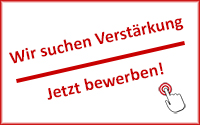Flat lift table
Lift tables with a very low overall height are called flat lift tables. Their low profile generally allows them to be used without a pit. Flat lift tables are often used when only small differences in height need to be overcome. For this reason, they are mainly used in production halls to create ergonomic workstations and as pallet loading stations.
Many lift table manufacturers use special platform geometry to facilitate loading. Alternatively, it is possible to fasten a small ramp or ramp plate in front of the flat lift table to allow effortless loading and unloading.
Foot protection safety edges
Most lift tables are equipped with a surrounding foot protection safety edge. These are directly integrated in the safety circuit of the lift table control system and immediately stop the downward movement of the platform upon actuation.
Lift tables where there is no risk of crushing underneath the platform, for example because they are installed in a completely closed shaft, need not be equipped with a safety edge. As the risk of crushing cannot be prevented by using roller screens, for example, a safety edge must usually be installed.
Foreign particles
Impurities in a substance are called foreign particles.
Foreign particles in the hydraulic circuit can cause major problems in lift tables, column lifts or goods lifts. Insufficient cleaning, improper filling and mechanical abrasion can deposit dirt particles in the hydraulic fluid. These lead to increased wear of the hydraulic components and in the worst case to failure of the respective component.
Freight lift
This type of lift is designed for the transportation of goods and people. However, there is a restriction associated with the transportation of people. Only people employed by the plant owner may be transported.
For this reason, freight elevators are mainly found in hospitals and in the industrial sector. Passenger lifts are used in private houses or apartment buildings instead.

